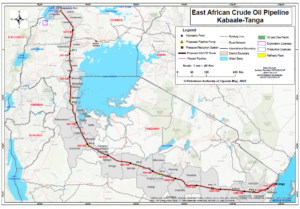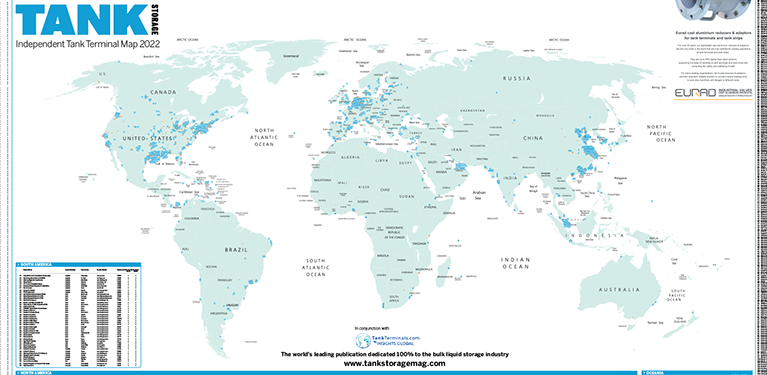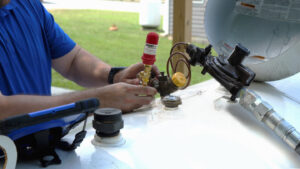 The world’s longest heated crude oil pipeline, carrying oil from Uganda to the Indian Ocean coast of Tanzania, will use a cocoon of electrical and fibre-optic cables along its entire 1,443 km length to provide heat and real-time satellite surveillance to prevent leaks.
The world’s longest heated crude oil pipeline, carrying oil from Uganda to the Indian Ocean coast of Tanzania, will use a cocoon of electrical and fibre-optic cables along its entire 1,443 km length to provide heat and real-time satellite surveillance to prevent leaks.
The East Africa Crude Oil Pipeline (EACOP), due to cost around $4 billion (€3.65 billion), is the keystone of Uganda’s booming oil and gas sector development, scheduled to pump its first crude oil in 2025.
‘With its extensive fibre-optic network allowing online connectivity, EACOP promises to be one of the world’s smartest and safest bulk pipelines with real-time monitoring along its entire length via satellite,’ says Dozith Abeinomugisha, director in-charge of midstream developments at the Petroleum Authority of Uganda (PAU).
Safety staff will be able to detect any pressure change indicative of a leak, sabotage or pilfering within seconds and isolate the relevant section of pipe to keep environmental damage and commercial loss to a minimum.
Both the PAU and EACOP’s holding company will have real-time monitoring centres at their respective offices to receive immediate updates via satellite uplink. This means that monitoring is not dependent on local mobile phone or radio networks, guaranteeing greater reliability.
The remote data monitoring and transmission technology known SCADA (Supervisory Control and Data Acquisition) works even though the pipe will be buried between 1 and 3 metres underground, providing safety staff with a complete, live picture of the entire pipeline.
With EACOP planners aware of the importance of mitigating climate change, renewable energy will be used as much as possible for all pumping, heating, monitoring, and storing. The Ugandan section will be entirely carbon neutral with 80 MW of solar and hydro providing all the power needed while work is continuing on the Tanzanian side to develop similar levels of renewable capacity.
The design and construction of EACOP, which began in 2018, has been one of the greatest challenges of African infrastructure engineering in recent history.
With safety a top priority for EACOP, high-grade steel and welding between each 18 m length, tested at the time of laying and rejected if any faults are found, means the risk of internal leakage across the 25-year life of the pipe is reduced to almost nothing.
But to make sure, the SCADA system, constantly monitored by both safety officers and computer tracking algorithms fine-tuned through the latest machine learning technology, will pick up the slightest change in pressure indicative of a leak. The sensors can also detect seismic activity in case of earthquakes and warn operators to turn off the flow if there is a risk of a dangerous tremor.
Block valves are placed every few kilometres along the pipeline meaning that if a leak is spotted, the affected section can be isolated immediately and only a short section of pipe risks being drained.
Scouting for the EACOP route began in 2018, and after two years of consultation and surveying, it was decided the pipeline would arc for 296 km southeast through Uganda from the collection and pumping station at Kabaale in Hoima district, before crossing 1,147 km in Tanzania to its Indian Ocean coast at Chongoleani village near the port of Tanga. The route was chosen to minimise disruption to the local population and the environment.
‘Local farmers and residents were consulted in both Uganda and Tanzania where the pipeline cuts across their land. Public information campaigns were launched to offer compensation to legitimate claimants for loss of land, assets such as buildings and grazing rights,’ adds Ali Ssekatawa, director for legal and corporate affairs at PAU.
With the two already-licenced production areas covering the Tilenga and Kingfisher projects, both located in western Uganda around Lake Albert, scheduled to peak at 230,000 barrels a day production, an export pipeline is essential to maximise earnings for Uganda’s hydrocarbon assets.
The country is planning to build its own refinery to deal with local demand for petrol and other consumer products, one that will use up 60,000 barrels a day , meaning at the current planned peak EACOP will pump 170,000 barrels per day.
To allow for new production capacity from yet-to-be-developed exploration areas in Uganda and changes in the levels of refinery consumption, EACOP has been designed with a maximum flow rate of 246,000 barrels per day.
This allows Uganda to build in added capacity over the next few years confident that the longest, heated, smart crude oil pipeline in the world can keep revenues coming in to finance economic upliftment and progress in the African nation.
Work is already advanced on the pumping stations, work camps and storage facilities along the EACOP route as well as the coating plant. The first 100 km of pipe (5,600 sections each 18 m in length, all loaded onto a single bulk carrier) has been manufactured in China and is expected to arrive by ship in the Tanzanian hub port of Dar es Salaam within weeks. After coating and welding the first sections of pipe are due to be laid midway through next year.















